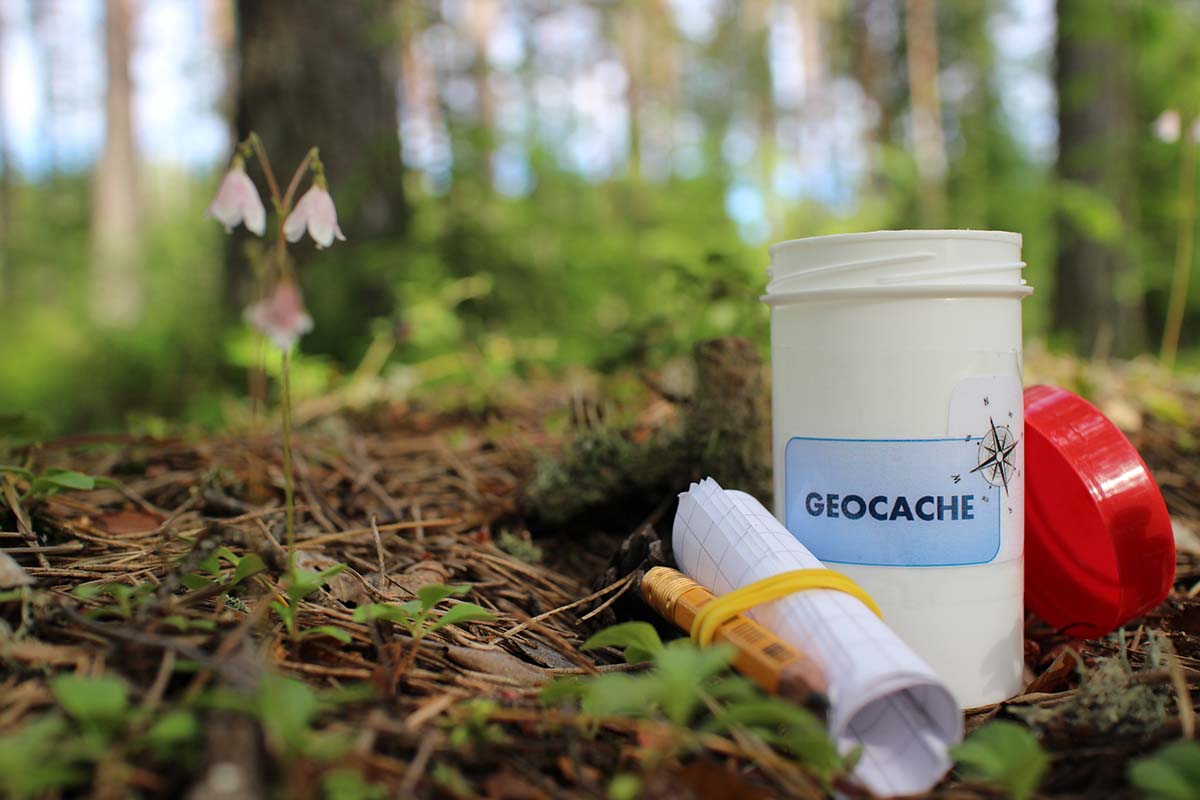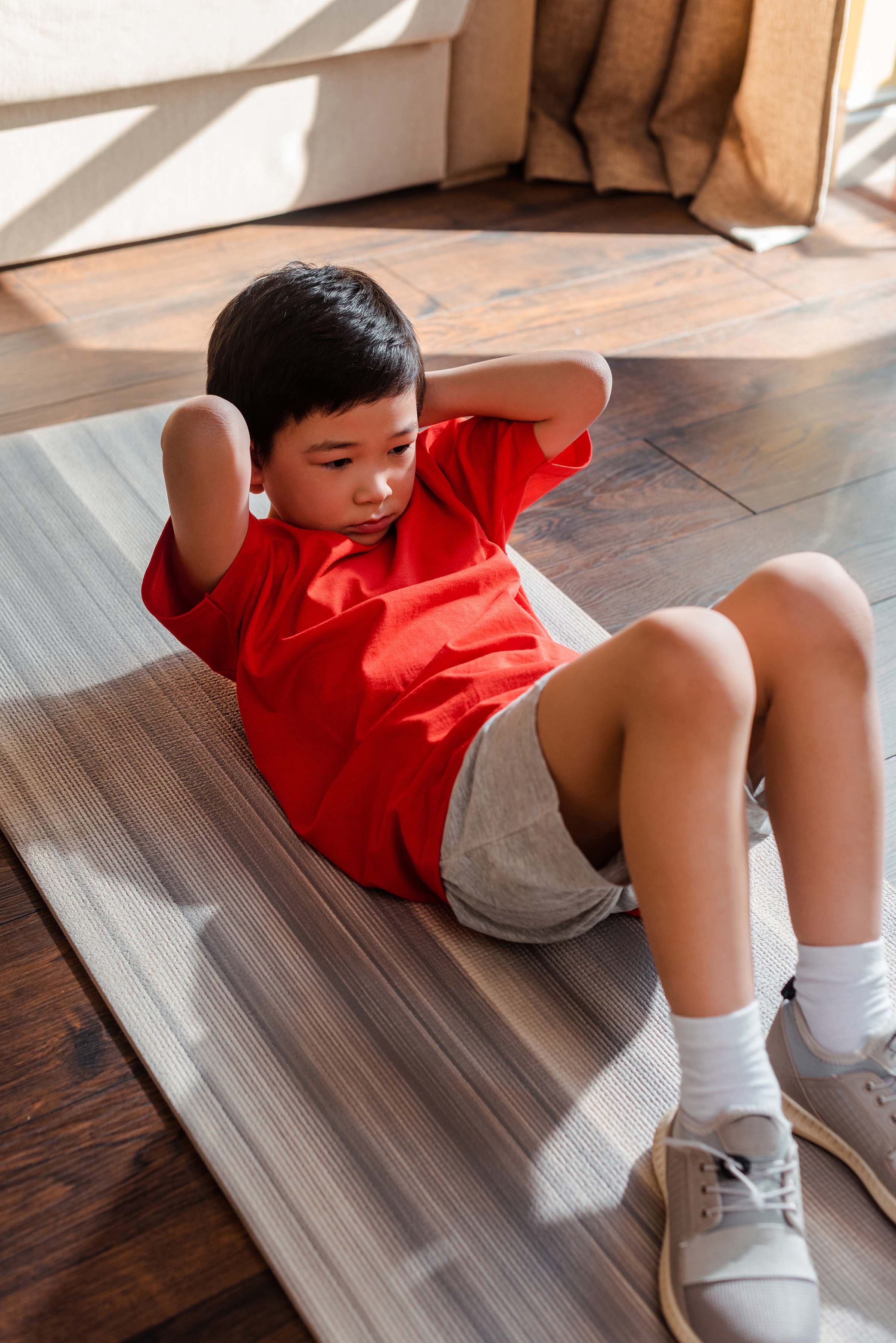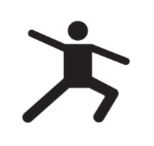August 2020
Sprinting Back Into Action: How We Can Look Through the Lens of a Physical Educator To Navigate the New School Year
August 21, 2020
After about six months of wearing pajamas all day, children interrupting Zoom meetings,
and simply wondering what teaching jobs will be like when we return, as we prepare
for the fall, we all know we are about to embark on the journey that is the “new normal”
in schools. Whether your school is fully operational, using a hybrid model, or virtual,
this year is most likely a major change for many of us. We are creatures of habit,
and change can be scary at times. We all need to take a deep breath and embrace the
challenge for our students and our school communities.
Every change is also an opportunity
This is also an opportunity to become better educators. Personally, I am no tech wizard. I learned more in the last six months than I could have imagined. The pandemic has definitely caused me to reevaluate some of my teaching practices, and I have become a better teacher through this sometimes-painful process. As an experienced PE teacher, I frame this article through the lens of physical education, but many of concepts discussed can be applied to any educational domain. I must promote this content area that is very near and dear to my heart. Physical education is awesome!
Physical activity extends well beyond the physical education class, athletic fields, and recess. I encourage all educators to incorporate movement into their classrooms. Physical activity has numerous benefits for students such as: increased cognitive functioning, increased academic performance, and increased time on task. Physical activity can serve as a “brain break” for your students, or to let them get their “wiggles out.”
A benefit of social distancing is that it allows students to have a larger personal space if you choose to incorporate movement into your classroom. “Go Noodle” is a popular platform with tons of activities designed for students. There are a variety of activities for different age groups. There are lots of great web resources for dance videos that you can have your students watch and dance along with. This allows for a quick 2-3 minute movement that can help with cardiovascular fitness and coordination, but also allow students to express themselves and unwind. There are several good yoga videos that are appropriate for students. One popular series for school aged children is “Cosmic Kids Yoga.” Yoga allows students to be active, develop core strength and flexibility, it also requires them to clear their minds and focus.
A benefit of social distancing is that it allows students to have a larger personal space if you choose to incorporate movement into your classroom...activity can be incorporated in reviews and assessments.
Activity can be incorporated in reviews and assessments. I like to do active reviews and informal assessments with some of my lecture-based classes. An example of how this might look is to have students stand in free space by their desks. Then you would provide a multiple-choice question on the board with answers. Instead of students raising their hands to answer questions, they answer with their bodies. You have your students do the movement associated with the answer choice they think is correct. Here is an example:
| Frogs, newts, and salamanders are all: | |
|---|---|
| Answers | If you think the answer is... |
| A. Mammals | A. Mammals - do jumping jacks! |
| B. Reptiles | B. Reptiles - do sky jumps! |
| C. Birds | C. Birds - balance on one foot! |
| D. Amphibians | D. Amphibians - hop on one foot! |
Physical education classrooms will look a lot different this fall. For face-to-face instruction, educators have to give strong consideration to appropriate spacing, how to use equipment, how to sanitize, how to organize activity while maintaining social distance, and many other daily routines like dressing out and drinking water. For remote or virtual instruction you must negotiate the challenge of connecting with students via a screen and developing content that can be done safely in a home environment. These are definitely challenges that again, we have to embrace. When asked “how do you teach PE online?” or “How do you assure social distancing?” I emphasize three key points: 1) ensure students find value for the subject; 2) create a positive, motivating climate; and 3) be innovative.
As teachers we need to make sure that students find value of our subject matter. Why is what we are teaching important? We need do share our passion for the subject matter and why we believe it is important to us. Making sure that our content is relevant to students is time well spent. In physical education, this means explaining to students the benefits of a healthy lifestyle and giving them real world examples of how healthy lifestyles can be beneficial to them. You can also highlight the issues associated with a sedentary lifestyle, but focusing on the positives of being active to me is preferable. Designing lessons where students can see short term changes is a powerful way to impart value. This can be done through the use of various apps or using physical activity journals. Using goal setting allows students to see how they develop and change over longer periods of time.
How do we get our students to do what we want them to do? Setting up lessons so that students are intrinsically motivated is the key to helping students make choices to engage in their learning. Intrinsic motivation involves engaging in an activity because you find a level of enjoyment, challenge, satisfaction in it. Self-determination theory provides a blueprint to promote intrinsic motivation: to promote intrinsic motivation, students must feel competent, autonomous, and related to a learning community.
To promote feelings of competence, structure activities so that students believe that they will be successful if they try hard. Provide students with opportunities to refine their skills through activities that are developmentally appropriate and success oriented. Allow students opportunities to assess themselves so that they can see their progress and understand what they need to work on to improve. To promote student autonomy, give students choices and integrate accountability in the lessons. Students are more likely to engage in learning activity when they feel they are freely engaging or have some say during the activity. We also need to provide opportunities for social interaction to allow students to connect to the activity and each other. Communicating to students that you care about their learning is an important aspect of promoting intrinsic motivation, whether instruction is in person or virtual.
Maintaining the status quo is not sufficient to continually improve teaching and learning. Developing effective strategies to promote instruction during the pandemic is a challenge that again, we must embrace. This is an opportunity for us to really grow as educators. In many cases we will have to think outside the box to really reach our students. We may not be able to teach the same subject matter that we have always taught or in the way we have always taught it, but this should encourage us not to be satisfied with the status quo. This may lead us teach content in a different way, using different approaches, or including ideas that we are not familiar with. Be creative. There is no precedent for teaching in these formats, so we need to be the person who develops the next big idea for best practices. This will also allow for your students to use their creativity. Students want to be heard and seen, and this will give them an opportunity to express themselves.

For remote PE experiences, check out Geocaching. It's a great way to be physical while nurturing discovery, navigation, direction, GPS, and love of the outdoors.
Virtual PE
When teaching PE in a virtual format, many of the keys to effective teaching remain constant. Help students see the value in what they are learning, promote intrinsic motivation, allow students to have choices so they take ownership in their learning. Create opportunities for students to interact. Just because students are isolated in their homes, that does not mean class has to be that way. Students can work on different projects, routines, and plans through media platforms like Google Hangout or Zoom. Technology provides a variety of ways for students to connect. Give students specific challenges so that they can see their progress. It is especially important in remote instruction to be very clear on your objectives and allow for your students to be able to self-assess.
When teaching virtually, consider that students will have different spaces and may have limited access to equipment. Consider lessons and units that they can be done do in their homes or neighborhoods. Generally, one of the most common lesson themes incorporated in a virtual format is fitness, with activities including different components. Other unit ideas that can be adapted for virtual instruction include bike and pedestrian safety, water safety, outdoor education (hiking, fishing, or geocaching), constructing home PE equipment, and a creative game unit.
PE with social distancing

Physical activity has numerous benefits for students such as: increased cognitive functioning, increased academic performance, and increased time on task. Physical activity can serve as a “brain break” for your students, or to let them get their “wiggles out.” This is true for any school plan - in-person, virtual, or hybrid.
If your school is supporting face-to-face instruction, Physical Education (PE) is most likely going to look very different. Balancing unit objectives with safety and social distancing protocols is yet another challenge to be faced. It is hard to imagine a PE classroom where students cannot share equipment or even give each other a high five for a job well done. Things to consider when first starting out are to limit equipment usage. Try to think of units that use very limited equipment. If lessons are dependent on equipment, make every effort to ensure each student has their own piece of equipment and avoid sharing. Teach and preach sanitizing. This needs to be strongly monitored and modeled. If equipment is used, it must be sanitized, and students must know how to do this. Try to avoid routines that lead to areas of congregation like such as roll call lines. Use space to maximize distance between your students, and consider floor markings or poly spots to make sure students maintain appropriate distancing.
Now that we have gone through the do’s and don’ts, you may be wondering, “what can I actually do with my students?” Traditional team games that many teachers are accustomed to are likely not a viable option. This is a great opportunity to teach different content that is equally important, but sometimes put on the backburner. One of the simplest ways to teach is to focus on fitness education. Teach basic fitness concepts, how to target certain muscle groups and fitness components and teach how to personalize fitness programs. This is a perfect opportunity to teach dance, which is not a strength of mine, but this is a perfect time for me to work on it. Dance requires very limited equipment and allows for students to be active, creative, and social. There are lots of opportunities to consider content such as Yoga, Tai Chi, martial arts, that you may not have thought about teaching.
Strive for greatness
However, you approach this school year, be great and strive for your students to be even greater. There will definitely be some bumps in the road, but there will also be some amazing achievements when we work together. Collaborate with co-workers and peers to analyze problems and explore solutions. We will grow better together. Here is to another great school year!
Opportunities at a glance:

A benefit of social distancing is that it allows students to have a larger personal space if you choose to incorporate movement into your classroom. Instead of students raising their hands to answer questions, they answer with their bodies - jumping jacks, balancing on one foot, etc.

This is a great opportunity to teach different content that is equally important, but sometimes put on the backburner. Teach basic fitness concepts, how to target certain muscle groups and fitness components, and teach how to personalize fitness programs.

Focus on physical activity like dance, yoga, Tai Chi, and martial arts. These require very limited equipment and allows for students to be active, creative, mindful, and social.
Online Resources
- Cosmic Kids!
- Go Noodle
- OPEN PE
- SHAPE America Teacher Toolbox
- LAHPERD - Louisiana Association for Health, Physical Education, Recreation, and Dance
Written by: Justin Morris
Justin Morris MS, is the Undergraduate Coordinator of Health & Physical Education (K-12) in the School of Kinesiology. Justin also serves as the coordinator for activity courses. In 2011, He received his Bachelor’s Degree in Health & Physical Education from Louisiana Tech University. Justin then attended Louisiana State University where he earned his MS in Kinesiology with an emphasis in Pedagogy. He then taught physical education at D’Arbonne Woods Charter School in Farmerville, LA for four years. He has also been involved in coaching high school athletics for the past six years. Justin is currently working towards his doctorate in kinesiology, with an emphasis in Pedagogy at LSU. His research involves achievement motivation and influences on youth sport athletes. Justin is a member of LAPHERD, AASP, and NASPSPA.
Transforming Physical Education in Louisiana
In 2018, the LSU School of Kinesiology helped Louisiana combat our high obesity rankings by working one-on-one with physical educators across the entire state, hoping to have a significant impact on our children's health education and practices. Kathy Hill, former instructor in kinesiology, led the Louisiana Physical Education Standards Committee. She and a team of educators from around the state revamped the standards for K-12 public school physical education programs. Hill and the committee also trained more than 1,000 teachers through workshops held at 13 parishes.
The collaboration included:
- The Governor’s Council on Physical Fitness and Sports
- Louisiana Department of Education
- Louisiana Association for Health Physical Education, Recreation and Dance
- Department of Health and Hospitals
- Alliance for a Healthier Education
The team developed a comprehensive physical education standards document to help PE teachers in Louisiana promote wellness and lifelong fitness from kindergarten through high school.
About the LSU Health & Physical Education Teacher Certification Program
This concentration leads to certification for teaching in Louisiana and most other states, preparing a student to teach grades K-12 in physical education and health as well as coach in a variety of settings. Students can elect to have a coaching minor in addition to their K-12 major, which is an additional 12 semester hours for Health and PE majors (17 hours for all other concentrations).
Professional Organizations
Students interested in teaching, coaching or supervision are strongly encouraged to
join SHAPE America as a student and continue membership throughout their career. This
organization is designed to support, encourage and provide assistance to professionals
as they initiate, develop and conduct programs in health, leisure, and movement-related
activities. Students may want to join this organization at the state level known as
the Louisiana Association for Health, Physical Education, Recreation and Dance (LAPHERD).
Membership is inexpensive and students receive the LAHPERD Journal, newsletters reporting
state activities, recent research and an update on the LAHPERD convention. Student
members are eligible for professional liability insurance, which is encouraged during
student teaching.